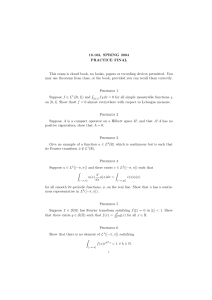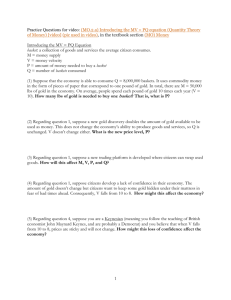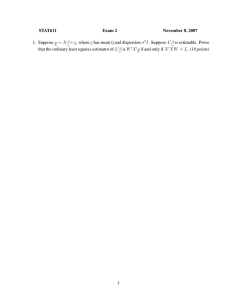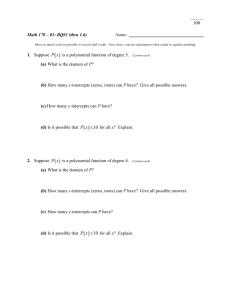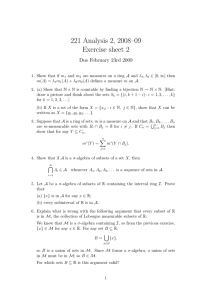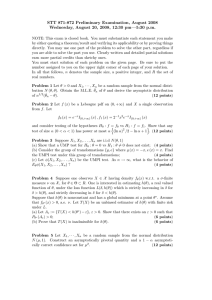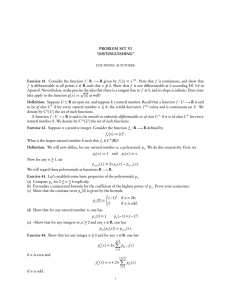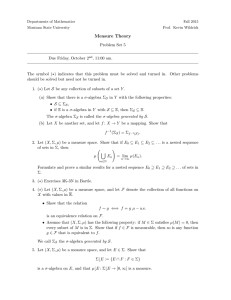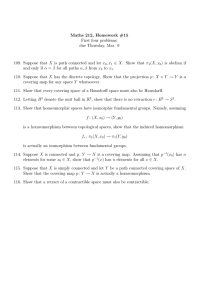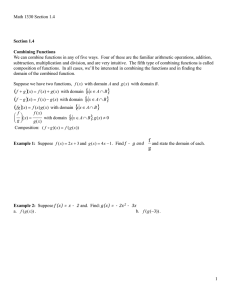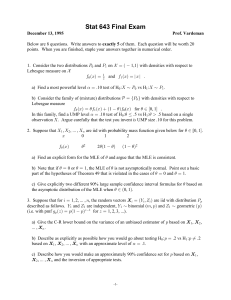Math 312, Autumn 2007 Problem Set 7 Rudin, Chapter 7: 1,2,5,6,7
advertisement
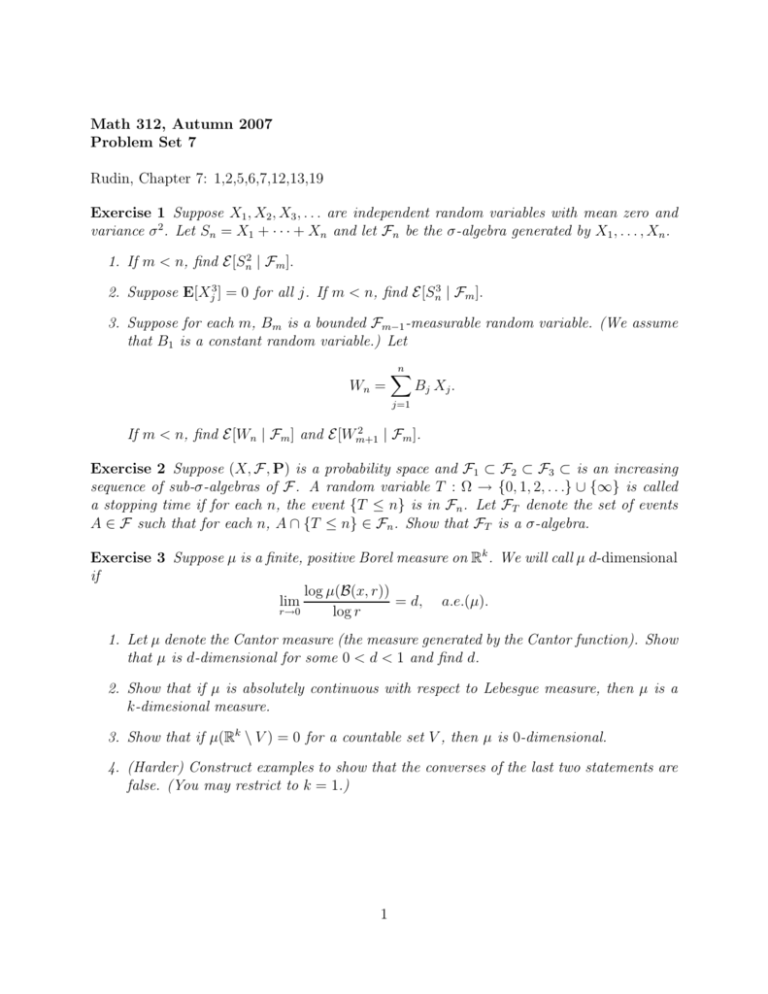
Math 312, Autumn 2007
Problem Set 7
Rudin, Chapter 7: 1,2,5,6,7,12,13,19
Exercise 1 Suppose X1 , X2 , X3 , . . . are independent random variables with mean zero and
variance σ 2 . Let Sn = X1 + · · · + Xn and let Fn be the σ-algebra generated by X1 , . . . , Xn .
1. If m < n, find E[Sn2 | Fm ].
2. Suppose E[Xj3 ] = 0 for all j. If m < n, find E[Sn3 | Fm ].
3. Suppose for each m, Bm is a bounded Fm−1 -measurable random variable. (We assume
that B1 is a constant random variable.) Let
Wn =
n
X
Bj Xj .
j=1
2
If m < n, find E[Wn | Fm ] and E[Wm+1
| Fm ].
Exercise 2 Suppose (X, F , P) is a probability space and F1 ⊂ F2 ⊂ F3 ⊂ is an increasing
sequence of sub-σ-algebras of F . A random variable T : Ω → {0, 1, 2, . . .} ∪ {∞} is called
a stopping time if for each n, the event {T ≤ n} is in Fn . Let FT denote the set of events
A ∈ F such that for each n, A ∩ {T ≤ n} ∈ Fn . Show that FT is a σ-algebra.
Exercise 3 Suppose µ is a finite, positive Borel measure on Rk . We will call µ d-dimensional
if
log µ(B(x, r))
lim
= d, a.e.(µ).
r→0
log r
1. Let µ denote the Cantor measure (the measure generated by the Cantor function). Show
that µ is d-dimensional for some 0 < d < 1 and find d.
2. Show that if µ is absolutely continuous with respect to Lebesgue measure, then µ is a
k-dimesional measure.
3. Show that if µ(Rk \ V ) = 0 for a countable set V , then µ is 0-dimensional.
4. (Harder) Construct examples to show that the converses of the last two statements are
false. (You may restrict to k = 1.)
1


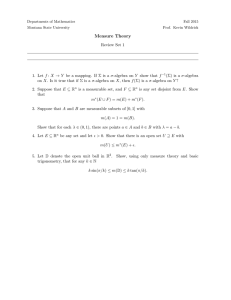

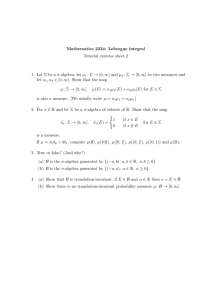


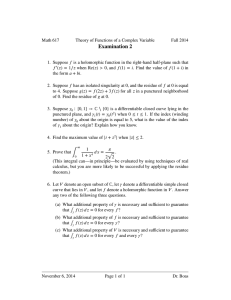
![MA2224 (Lebesgue integral) Tutorial sheet 5 [February 19, 2016] Name: Solutions](http://s2.studylib.net/store/data/010730672_1-a892ada8d0a07e1c5cf78400ac6d42a7-300x300.png)
